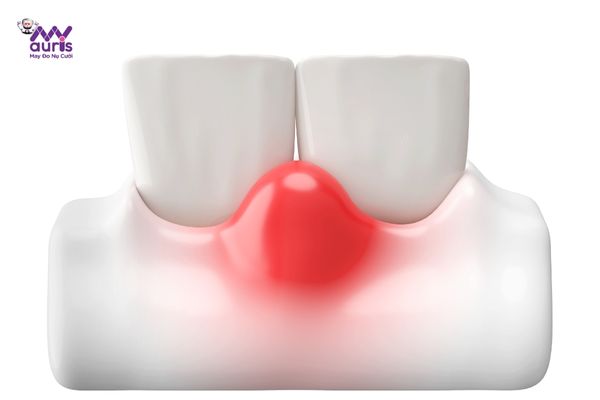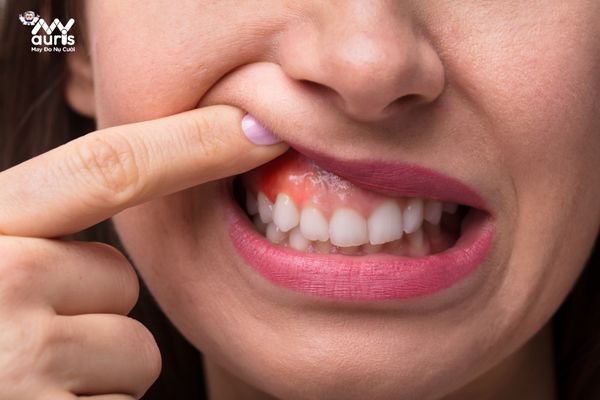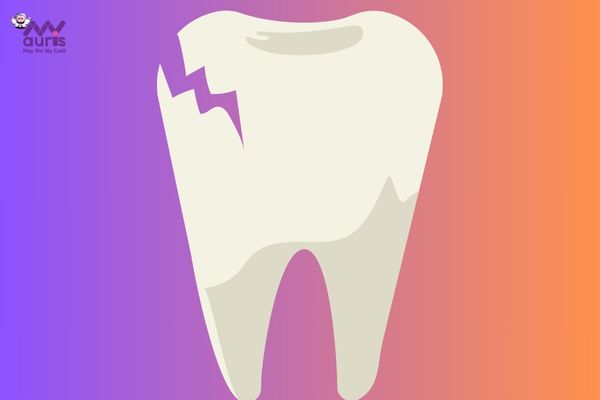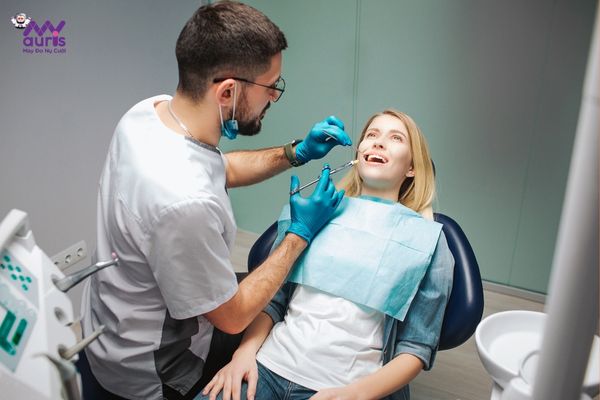Gingivitis is one of the common oral diseases. However, purulent inflammation is a sign of severe inflammation. If not treated, it will lead to dangerous infection in the body. To better understand the condition of purulent gingivitis, let’s learn with My Auris through the following article.
What disease is purulent gingivitis?
Gingiva is a soft tissue organization located below the root of the tooth. Healthy gums will be pink, evenly colored, firm and close to the roots of the teeth. The main role of the gums is to cover the underside of the teeth, making them stand firmly to perform functions on the jaw.
Swollen gums, also known as gingivitis, is a condition in which gum tissue is damaged by bacteria that exist in plaque left on teeth due to poor hygiene. Swollen gums are a common condition in all ages and are not too dangerous if treated promptly.

However, purulent gingivitis is a severe stage of inflammation that requires immediate treatment. Specifically, when observing the gums, you will see that the gums around the roots of the teeth are red and swollen, with white pus appearing inside and accompanied by pain. If left untreated without early treatment, it will lead to many dangerous complications such as tooth loss, blood infection, spread to the entire jaw, and even death.
Signs of purulent gingivitis
Gingivitis will have symptoms depending on the severity and mild stages as well as the location and physical condition of each individual. people. The most common manifestations of purulent gingivitis are:
- Gums change from light pink to dark red
- Formation of pus pockets in the gum area causes swelling of the cheeks or face and can cause bleeding
- Pain and discomfort when eating and drinking
- Eating foods that are too spicy, too salty, too hot or too cold can easily irritate the gum area, causing pain and discomfort.
- Bad breath
- The gum surrounding the tooth root tends to separate, causing the tooth to loosen slightly
- Some cases of swollen gums with pus show signs of fever, headache and insomnia at night due to pain.

Therefore, everyone needs to observe their oral health every day with careful hygiene. As soon as there are any unusual signs like the above, see a dentist for a check-up and find the cause quickly In the early stages, the disease is easy to treat and control without causing danger.
Causes of purulent gingivitis
Gingivitis Pus is caused by many reasons, the most typical of which are the following:
Dental diseases
When teeth are cracked or chipped, the pulp can be exposed, increasing the risk of infection. If not done If prevented in time, the infection will progress and form pus in the teeth and gums.
Periodontic disease
Periodontal disease is also a common oral disease. The disease develops in two stages: gingivitis and periodontitis. In the early stages, the symptoms of the disease are often very faint. Therefore, patients are often subjective and do not examine and treat early. When the disease progresses, the gums are swollen, there is pus at the tooth root, and even the tooth root is abscessed.
Due to hormonal changes during pregnancy
During pregnancy, the hormones estrogen and progestin increase a lot. causes the capillaries in the gums to swell and fold, leading to stagnation of blood and permeability of the capillary walls, thereby increasing the risk of purulent gingivitis. pus.

Growing wisdom teeth
Wisdom teeth are the last molars to grow on the human jaw. Adults, in the period of 17-25 years old. The teething process often causes a lot of discomfort and painWith that discomfort, wisdom teeth can easily grow underground, grow crookedly, invade other teeth, and can be covered by the gums, causing pus-filled gingivitis.
Poor oral care and hygiene
If you have the habit of biting with your teeth, opening hard objects such as food packaging, bottle caps, nails,… or using toothpicks, it can cause damage to your gums. From there, it is easy to become infected and if not treated, it will become more severe and pus-filled.
Inadequate cleaning, remaining plaque and food debris are also causes of increased purulent gingivitis. Or using a toothbrush that is too hard, too large, or a toothpaste with inappropriate ingredients can also cause your gums to become infected.

Some other causes
- Side effects of some medications
- Eating hot and spicy foods regularly causes heat in the gums
- Complications of some systemic diseases.
The above are all common causes of purulent gingivitis. Understanding the causes will help people have ways to prevent it and not be subjective in getting their oral health checked as soon as possible.
How to treat purulent gingivitis
When pain and discomfort are caused by gingivitis, people can apply some relief and relief. inflammation at home:
- Use warm salt water to gargle
- Drink chamomile tea
- Apply pure honey
When you go to the dentist, depending on the stage and level of inflammation, the doctor will recommend a suitable treatment plan:
- Drainage of pus: doctors will make a small cut at the swollen tooth root to drain the pus outside. After that, the doctor will clean the infected tooth area, tighten the wound and minimize the risk of spreading to other teeth.
- Treatment of swollen pulp: if the conditionIf the inflammation has spread to the pulp, the dentist will drill a small hole in the tooth until it reaches the pulp and then remove the pulp. After the pulp is removed, the inflammation is also eliminated. However, after that, porcelain tooth restoration should be performed to better protect real teeth.
- Minor surgery: in case a foreign object is the cause of damage and swelling of the gums with pus, the doctor will perform surgery to remove it. Then, the doctor will clean the inflamed tooth with antibiotics to prevent bacteria from spreading.
- Tooth extraction: in cases where the infection is too severe and cannot be treated anymore, doctors will have to remove the tooth to avoid bone loss, leading to jaw misalignment and affecting the health of the entire jaw. After tooth extraction, depending on needs, conditions and preferences, choose the appropriate tooth implant method.
- Using antibiotics: doctors will prescribe antibiotics during treatment to reduce inflammation and prevent the spread of infection.

Hopefully the information in the article aboutpurulent gingivitis will help people better understand this disease. From there, gain more experience and take good care of your teeth to prevent gingivitis. Please contact My Auris Dental immediately for advice and to schedule an examination as soon as possible.
Anh Thy





